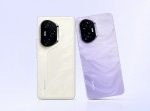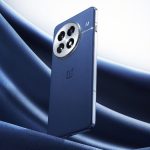I fully confess I was a skeptic when Samsung unveiled the first Note. And I certainly wasn’t alone among the crowd at the Messe Berlin that IFA. The 5.3-inch display was unimaginably large in a year when the average screen measured a hair over 3.5 inches. The stylus graced the phone like a vestigial organ — some strange and unnecessary relic from the days of the Palm Pilot we’d collectively (and happily) evolved away from.
Samsung rightfully points out such skepticism in reference to more recent devices that received similar pushback, early on. It’s something I think about a lot, faced with new innovations like foldable displays. You’d have a pretty great track record if you spent your time betting on new innovation to fail. It’s the nature of the beast — and this strange industry in which we find ourselves. The more radical the innovation, the more likely it is to faceplant.
But the Note was a success by any reasonable metrics. Within nine months of launch, the company announced that it had sold 10 million units. It helped inject new ideas into a category that was already starting to feel stagnant 4.5 years after the arrival of the first iPhone. It saw Samsung working to find new ways to embrace the idea of a mobile-first virtual office in a post-Blackberry world and, perhaps most profoundly, it ushered in the era of the phablet. By 2014, even Apple had to admit that the age of celebrating 3.5/4-inch as some kind of platonic screen size ideal was at an end with the introduction of the 4.7-inch iPhone 6.
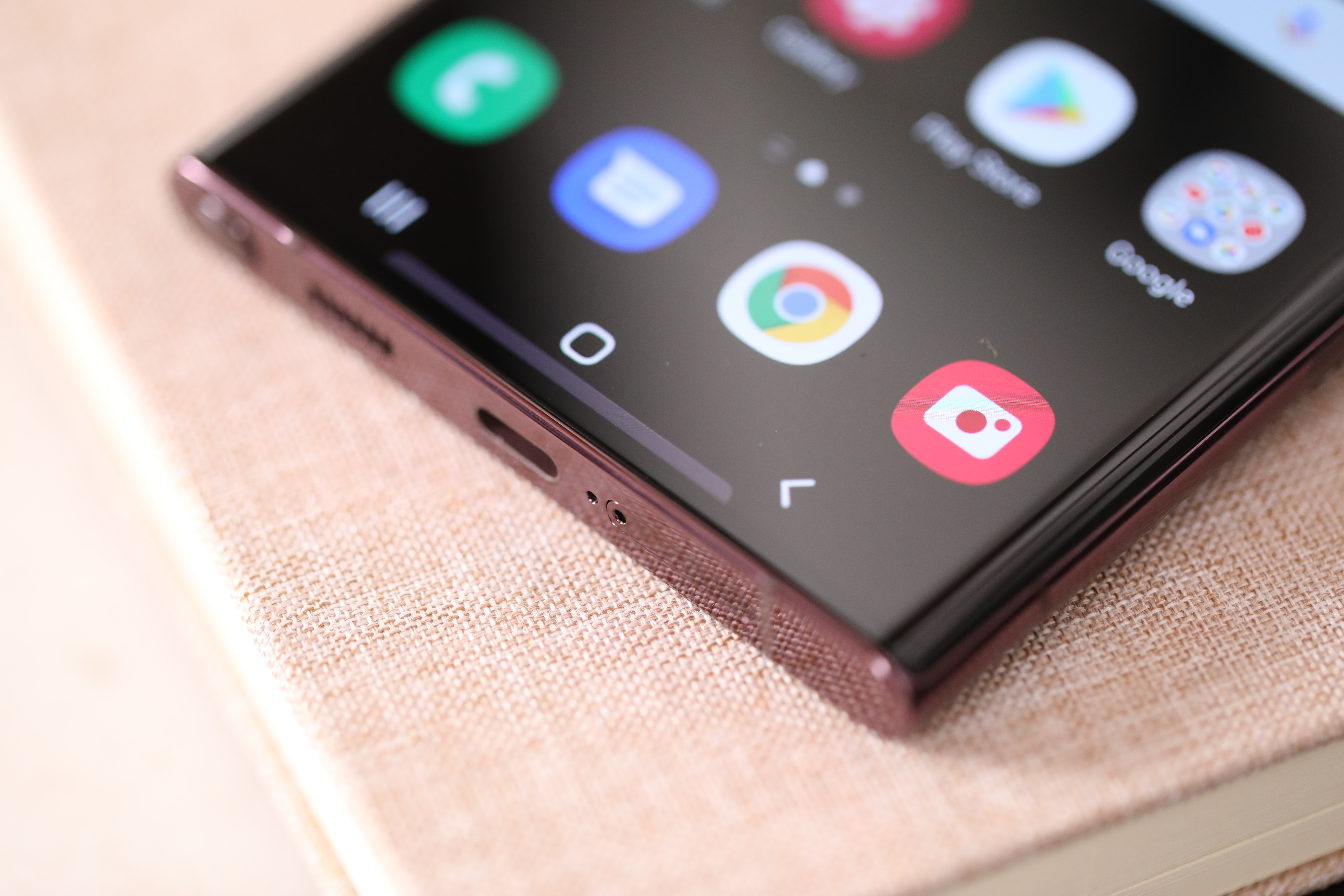
Image Credits: Brian Heater
Not all of the Note’s innovations were so transformational, of course. There was a period following the product’s release when it felt like the stylus was having a moment. That perhaps the input device had been unfairly maligned on the mobile form factor. A number of manufacturers experimented with them, ultimately finding far more success with larger pencils designed specifically for tablets.
Broader trends or no, the Note hung on to the S-Pen until the bitter end. It remained the one true differentiator as Samsung continually blurred the lines between it and the Galaxy S line, and in a bitter twist of irony, the smartphone S-Pen has now officially outlived the Galaxy Note as a brand. Ten years is a good run for a consumer electronics brand — particularly for a company like Samsung, which has a tendency toward the fickle, when it comes to brand names. Just look at the dance the company has done with its budget flagship brand.
Toward the end, sales began to stagnate — and even drop — according to analytic firms. Though the Note certainly wasn’t alone in that respect. The entire premium smartphone market suffered even prior to the pandemic. People simply weren’t in the market to upgrade as quickly. Premium phones were getting more expensive and also good enough to keep around for an extra couple of years. Meanwhile, the Galaxy S line kept getting bigger and, last year, added S-Pen support.

Image Credits: Brian Heater
Like many amid the Great Resignation, the Note took the year off to regroup. By the time 2022 rolled around, Samsung had declared its foldable line their own flagship, another piece of evidence that the Note wouldn’t be returning. Once Samsung integrated the S-Pen slot into the Galaxy Ultra 22, the Note’s spirit left its body and floated in the liminal region of brands that sometimes get mentioned in passing in marketing materials. Which is to say, in a conversation I had with a Samsung rep ahead of launch, they added that the company reserves the right to refer to a more abstract “Note experience,” with regards to features like S-Pen note taking. I said my piece around the announcement, but it bears repeating here: the Note brand is stronger — or at least more instantly recognizable — than Galaxy S. Samsung should keep it around, even if it’s as the Galaxy S22 Note.
We had a little time with the device ahead of launch a couple of weeks back. That’s where a bunch of the photos in this story came from. Basically, it’s a time to get shots of the product and play around with it a bit ahead of the official review. Naturally, I beelined directly toward the Galaxy S22 Ultra. The thing that occurred to me the moment I picked up the device is that it is, indeed, the Galaxy Note 22 in all but name. It looks like a Note, it acts like a Note, it notes like a Note.
So if you’ve been wearing all black and lighting Galaxy Note-shaped candles, you can chill out now. Think of it as though the Note witnessed a terrible murder and had to go into government protection. Or it married a Galaxy S and took its last name. I dunno. Whichever makes you feel better.
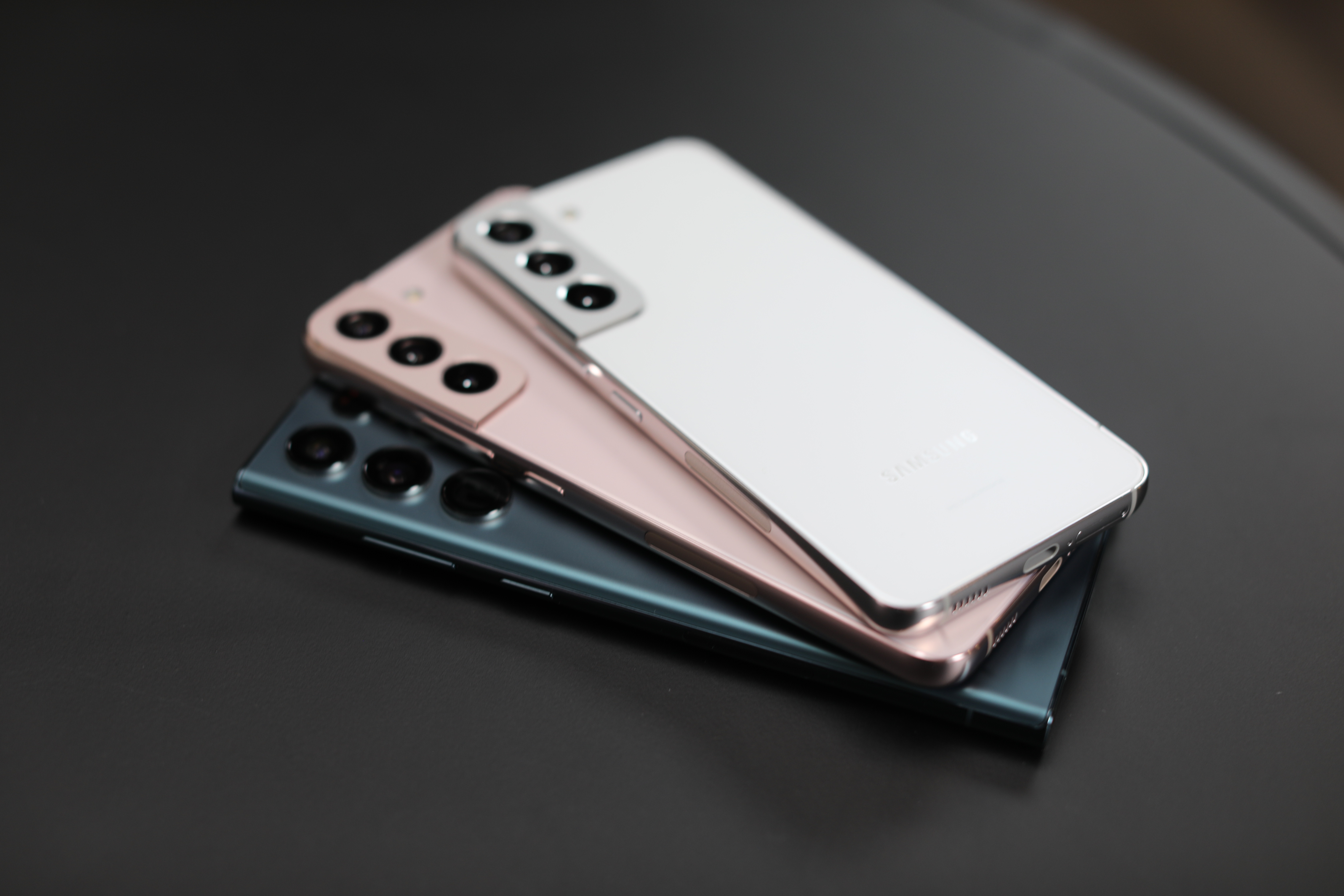
Image Credits: Brian Heater
What is interesting (and less discussed), however, is how the new device effectively disrupts the top of the S22 line. If you’re a bell and whistle-type person when it comes to buying a new phone, the S-Pen is now among the bells and/or whistles. It’s the logical extension of Samsung’s longstanding approach of going all in on the top end.
Although $200 sepa11rates the S22 from the S22 Plus and the S22 Plus from the S22 Ultra, the former two share more common DNA than the latter two. In fact, display and battery size are the two meaningful distinctions. Those apply in the case of the S22 Plus versus the Ultra, as well, while the top-of-line device also gets a higher-res main camera and additional telephoto, more memory and storage options (though it starts at the samne 8GB, 128GB) 100x Space Zoom (versus 30x) and the aforementioned S-Pen and all that entails.
Here are the basics of what you get for the $1,200 Galaxy S22 Ultra
• 6.8-inch display at 501 ppi
• Four rear-facing cameras: 108MP (wide), 12MP (ultrawide), 10MP (telephoto), 10MP (telephoto), 100x Space Zoom, 10x optical
• 5,000mAh battery
• 8GB-12GB RAM and 128GB-1TB storage
• 4K video capture
• Snapdragon 8 Gen 1 (market dependent)
• In-display fingerprint reader
The last three bullet points are the same across the board. But if, say, you want a 6.8-inch screen and 5,000mAh battery, instead of 6.6 inches and 4,500mAh, congratulations, you’re getting an S-Pen, as well. The flip side of this is, of course, you won’t get that Note functionality without spending at least $1,200. Samsung made it clear that it plans to maintain S-Pen functionality as a delineating factor between the ultra-premium and the rest of the Galaxy S line, moving forward.
In the grand scheme of very expensive smartphones, I don’t think any of this is end of the world type stuff, but there was bound to be at least a little friction when the company integrated one long-standing product line into the other. And listen, if I’m being entirely honest with myself here, I think we’d be critiquing the company for overly complicating things if suddenly there were like six S22 base models.
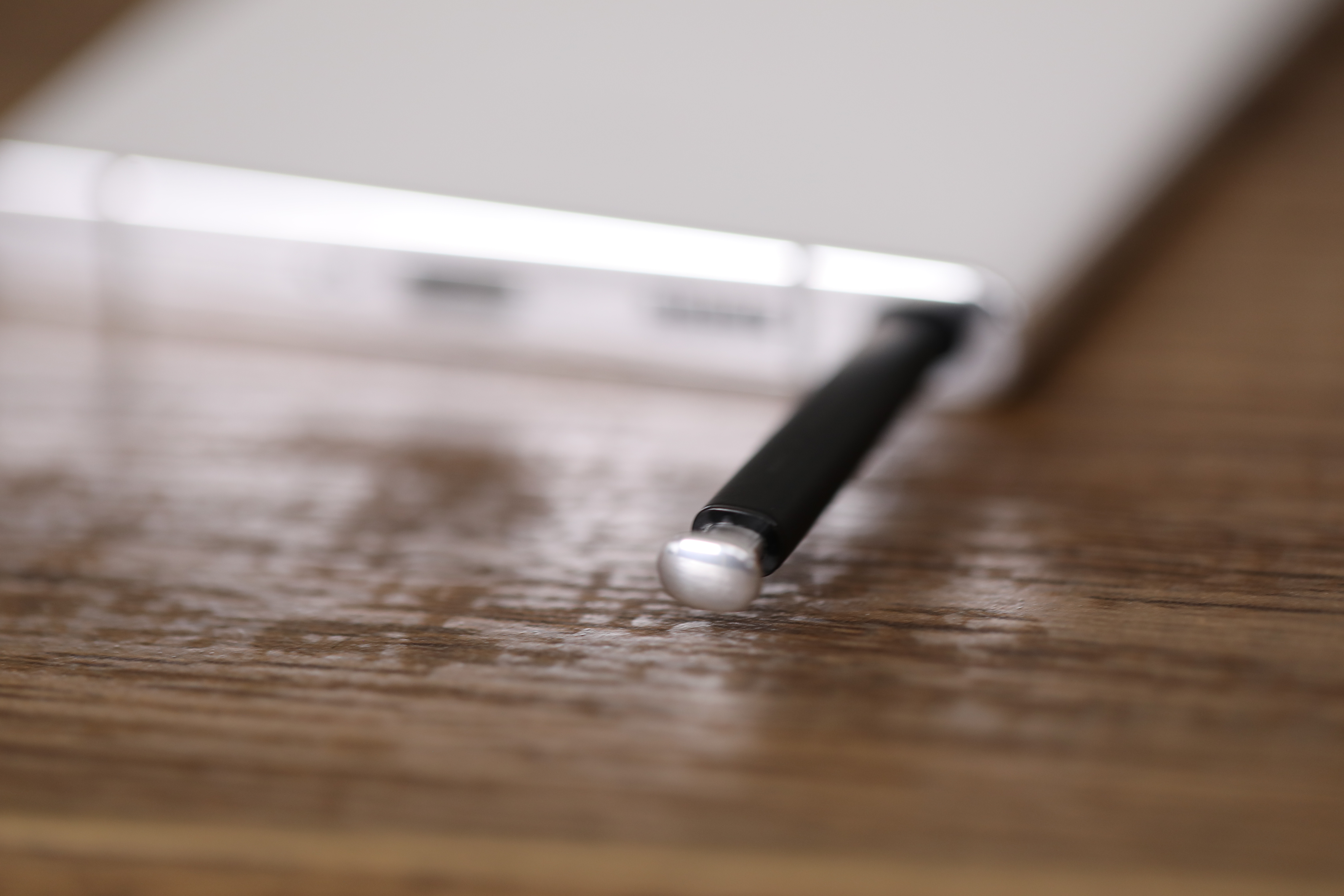
Image Credits: Brian Heater
Samsung had to make some decisions here and it went toward making the S-Pen a super-duper premium feature. So suddenly some folks are going to have to ask themselves whether they like the S-Pen $200-400 worth.
I certainly can’t answer that question for anyone but myself. I’ve long found the S-Pen to be an interesting and sometimes quite useful feature. Its evolution over the past decade has been a combination of software upgrades that have made it far more user friendly, with additions that felt like a company trying to figure out how to keep fresh the product’s most interesting feature. Is using the stylus to advance PowerPoint slides wildly useful? Not really. Is it neat? Yeah, sure, kinda.
On the truly useful side are improvements like Convert to Text. I’m consistently impressed at how well it does with my wildly illegible chicken scratch. My writing is bad enough with a pen and paper, let alone stylus on a glossy screen, and yet the software nearly always figures out what I’m attempting to communicate. Either my writing isn’t as bad as I thought (it is, spoiler) or the software is very good (spoiler, it’s this one).
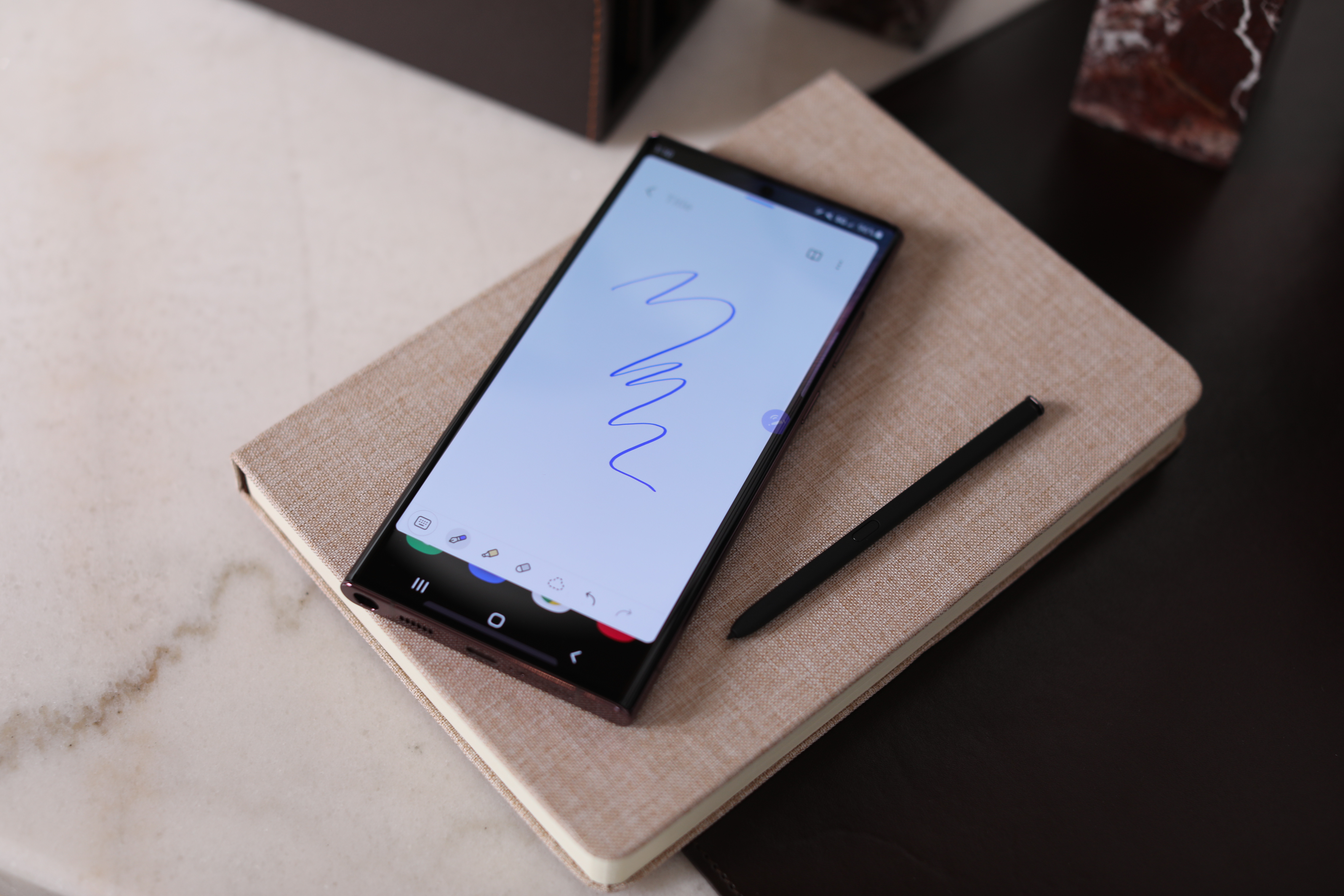
Image Credits: Brian Heater
Samsung has done a fine job fulfilling the S-Pen’s promise over the past decade. But even by the time first Note arrived, many users had already trained themselves to type proficiently on a touchscreen. For many, the Note was an entre into the world of large-screen phones that currently finds Samsung users choosing between 6.6 and 6.8 inches, on the high end. In its bid to improve the Galaxy S line, the company effectively cannibalized the Note.
What we’re left with, however, is a great (if, perhaps, overstuffed) fallout from more than a decade of smartphone wars. For all its heft, the S22 Ultra maintains a surprising sleek profile. The truth is that the original Galaxy Note was viewed as impossibly large, and in many ways, it fit the bill. In 2011, it took a lot more phone to support that much screen. But breakthroughs like edge-to-edge displays have managed to fit more screen into a smaller overall footprint.
Make no mistake, the S22 Ultra is a tank at 6.43 x 3.07 x 0.35 inches. As an average size adult male with (anecdotally) average size hands, there were moments when the 8 ounce device felt unwieldy. It’s the price you pay for going big. And, as Samsung would no doubt happily interject here, if it’s too big a surface area for you, it’s got a couple of foldables it’ll happily sell you.
The cameras are top line here, too. I happily took it for a spin around my neighborhood on an unseasonably warm February morning. The S22 takes some of the best photos you can capture on a handset in 2022. Night shots have made impressive progress over the last few generations. Samsung’s most meaningful competition on that front (and imaging, generally) is the latest Pixel, which finds Google giving in and finally admitting that hardware also matters.
Night shots are one of the places you’ll see the biggest difference between the Ultra and lower-speced S22 models — meaning that those improvements are likely to filter down in a generation or two. Space Zoom, too, offers a mind-boggling 100x, but that comes with a dramatic decrease in fidelity. I’ve not seen a super compelling case that the feature has moved far beyond novelty. Features like nona-binning, which combines pixels shot with the 108MP sensor to allow more light in, are far more meaningful for everyday use.
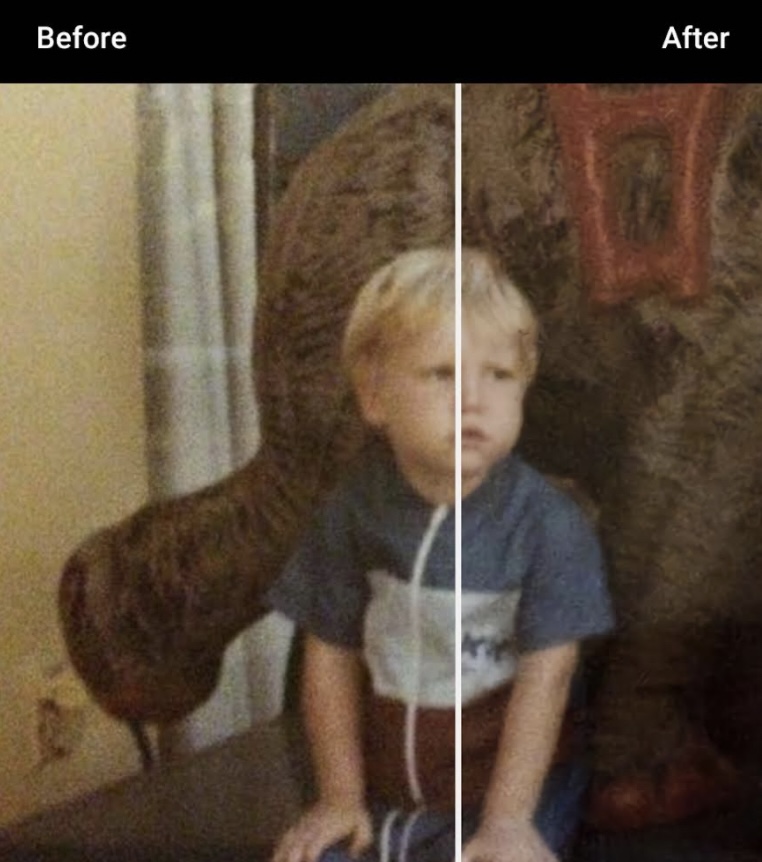
Baby Brian, remastered
Earlier additions like Photo Remaster and Object Eraser find the company continuing to improve on the software front. Autoframing improves shots with multiple subjects, while the improved Portrait Mode utilizes a depth map to take more precise cutouts with the bokeh effect. I’m happy to report it works surprisingly well with rabbits. The display offers improved outdoor viewing — a longtime sticking point for handsets, particularly on those aforementioned morning photo excursions. The beefy 5,000mAh battery, meanwhile, got me through 26 hours of moderate to heavy use.

Image Credits: Brian Heater
The S22 Ultra is a very good phone. That was never a question, really. You can’t say it combines the best of both Galaxy lines, exactly, so much as meeting in the logical center point between the two. The S and Note have, after all, been slowly morphing into one another over the past several generations. What is a broader question, however, is what the product says about the fate of the premium smartphone.
The category has lost much of its luster over the past several years. It’s an excitement Samsung hopes to revive with the arrival of the foldable. Though even with the most optimistic projections, we’re a long ways away from that form factor dominating the conversation.
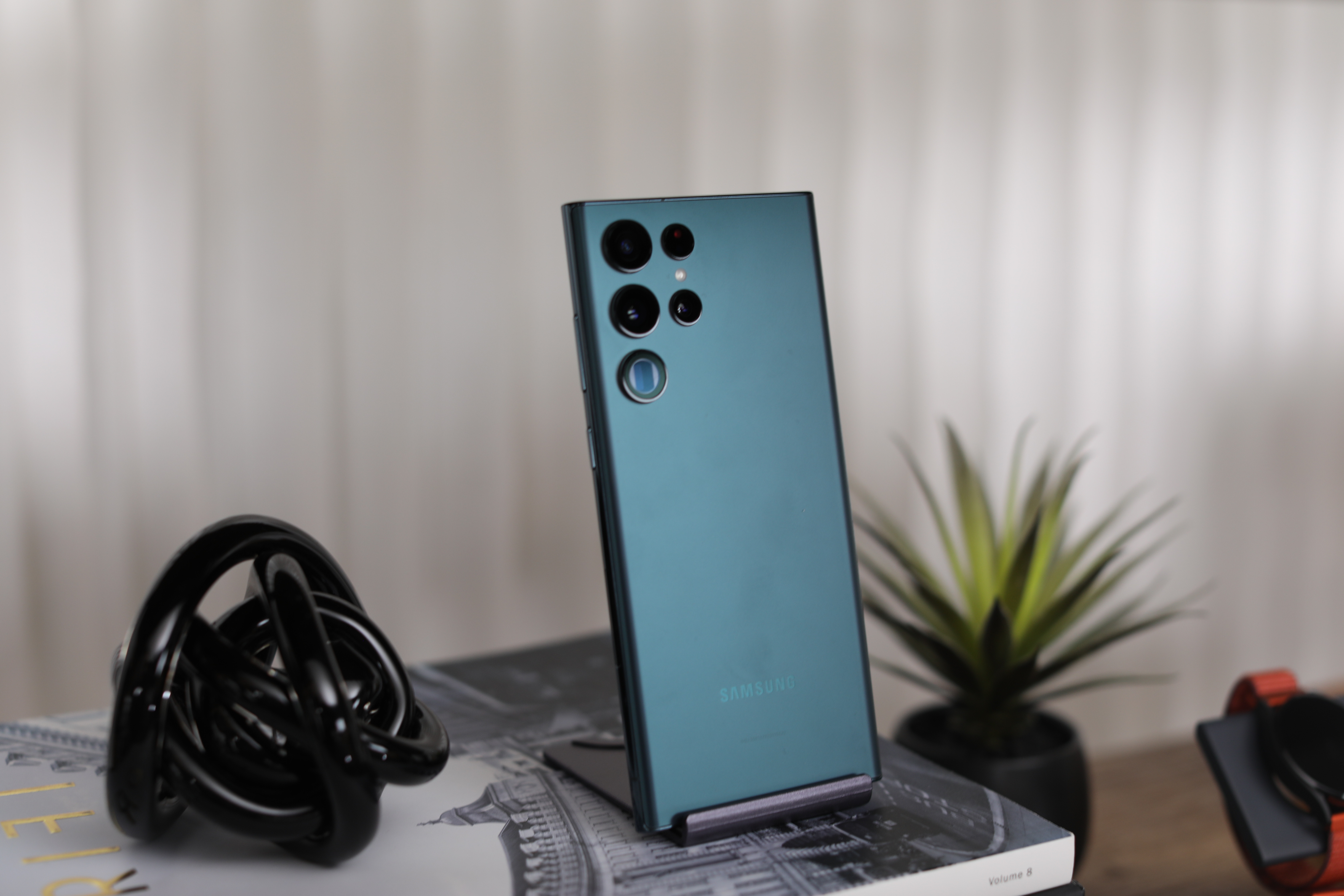
Image Credits: Brian Heater
Meantime, Samsung will continue doing what it does best: jamming every bell and whistle into a device at a truly premium price point. Unless the S-Pen is a total dealbreaker, however, the vast majority of users should be perfectly content staying on the lower end of the Galaxy S22 offerings.
For a well-loved brand that’s weathered as many storms as it has, it’s strange to see the Note quietly drift into the background the way it has. But it undoubtedly had its moment in the sun, and its innovations will live on through their broader impact on the smartphone landscape, even as the company sunsets the brand to make room for its next gambit.
Powered by WPeMatico

